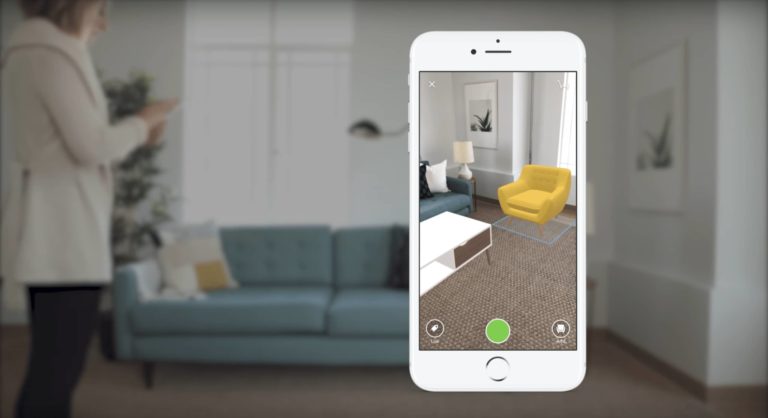
Like many analyst firms, market sizing is one of the ongoing practices of AR Insider’s research arm ARtillery Intelligence. A few times per year, it goes into isolation and buries itself deep in financial modeling. One such exercise recently examined the full spatial spectrum.
By that, we mean the main tentpoles of XR: mobile AR, headworn AR, and VR. These each get their own standalone forecasts, but are also assembled together once per year for a holistic view. We don’t do market sizing around the m-word because, well, it doesn’t exist yet.
So what did this forecast uncover? At a high level, global XR revenue is projected to grow from $15.7 billion in 2021 to $73.1 billion in 2026. This steep growth is driven by the collective revenue generation around several markets, and the projected outer-year inflections in headworn AR.
Drilling down, our latest Behind the Numbers installment looks at the forecast’s outlook for spending on AR shopping enablement. How much do brands spend on technologies to XR-enable their eCommerce shopping flows, including product try-ons, and other 3D visualization?
Demand Driven
Diving into the numbers, spending on immersive shopping enablement is projected to grow from $1.39 billion in 2021 to $11.63 billion by 2026. This includes brand spending on immersive-shopping enablement for VR, headworn AR, mobile AR, and desktop (e.g., Google Swirl).
As background, these spending levels are related to an area we explored in a recent part of this series: consumer XR shopping. There, we looked at consumer spending on physical goods that’s influenced in some way through 3D visualization. It’s projected to reach $211 billion by 2026.
The XR commerce enablement spending we’re looking at today is driven by that quickly-growing consumer behavior. It includes spending on software that helps brands create, optimize, and manage 3D models, as well as other interactive elements required for product visualization.
Naming names, some of the tools included in this emerging and opportune category include CG Trader (3D model creation), VNTANA (3D model optimization and management), and NexTech* (eCommerce integrations). But it doesn’t include ad placement (tracked separately)
In terms of breakdowns and spending shares, the majority of XR shopping enablement currently happens in mobile AR, given its scale and early usage lead. Headworn AR trails, as the usage and installed base aren’t consequential yet. And VR is less conducive to product try-ons.
These shares could shift over time as consumer headworn AR is accelerated by the likes of Apple Vision Pro. But that will take several years as these devices need time to gain capabilities… and come down in price. VR could meanwhile gain more applicability in immersive shopping.
The Carrot or the Stick?
Stepping back, this is an opportune XR subsector due to its growth potential. As noted, consumer engagement with immersive shopping currently shows ample momentum. It will be further propelled by the camera-native Gen-Z as it continues to gain spending power.
As these factors advance, AR shopping will increasingly become table stakes for brands. Fortunately for them, the barriers are lowered by the likes of Apple’s Object Capture and other tools that enable 3D model generation using an iPhone (sans complex photogrammetry).
One way the above sequence will play out is through consumer conditioning. First, early adopter brands start to whet consumers’ appetites for things like dimensional product try-ons in mobile AR. Gradually, that will condition user habits, which then evolve into expectations.
Those consumer expectations will then pressure brands that haven’t yet adopted AR marketing to finally come on board. They won’t have much choice because it will be table stakes at that point. Put another way, brands will adopt AR eventually, whether by the carrot or the stick.
To rest on another historical example, the above sequence is how digital photography became ubiquitous in eCommerce. It’s hard to imagine a day when online product listings didn’t contain several images from every angle (and 3D spinners in some cases), but that was the reality.
Of course, AR is more complex than photography, which is why the above sequence will take longer. That’s what we’re currently seeing in the slow adoption cycle for AR shopping enablement. Innovators with the patience to stick with it could be rewarded with a competitive edge.
*The author of this post owns stock in Nextech AR Solutions. See AR Insider’s disclosure and ethics policy here.

